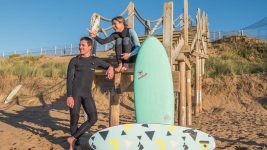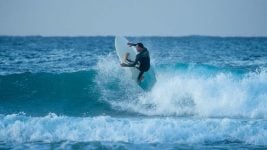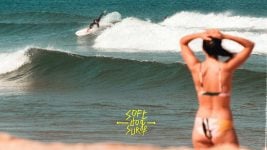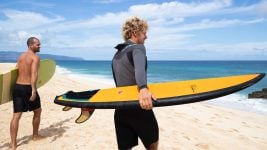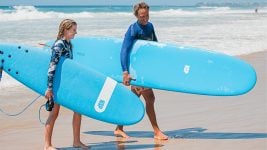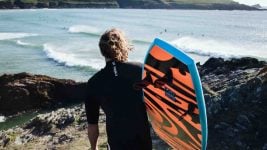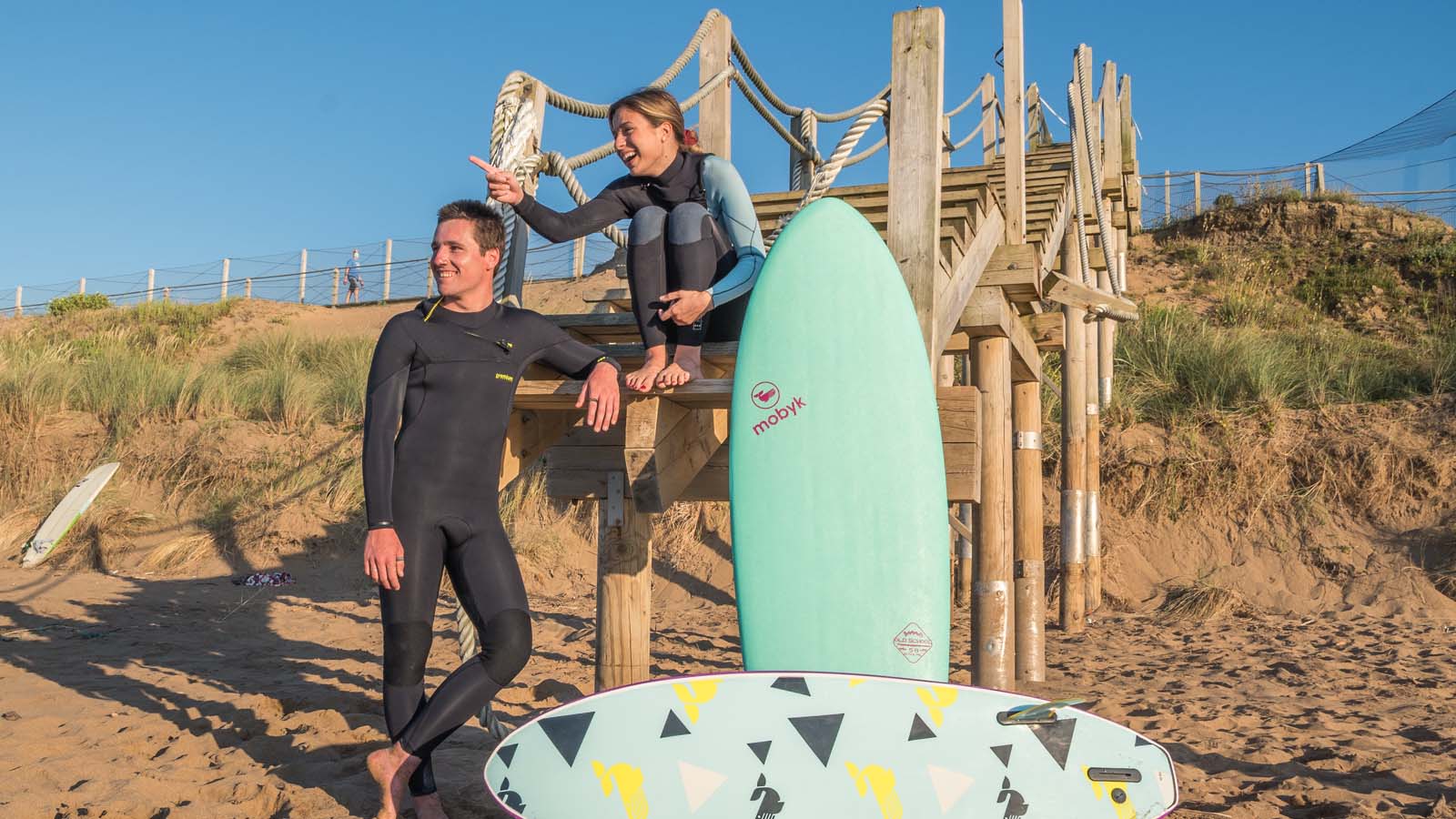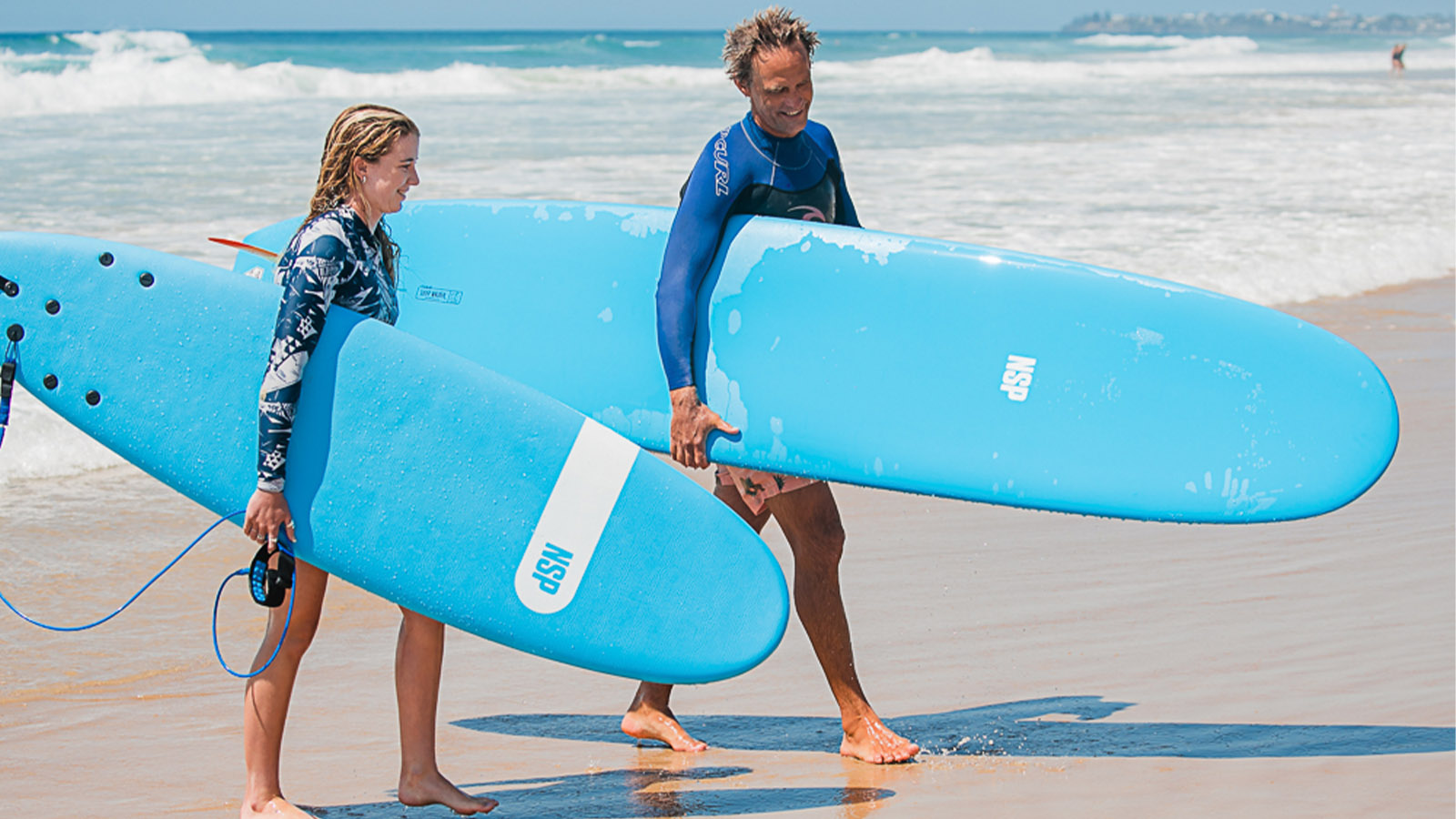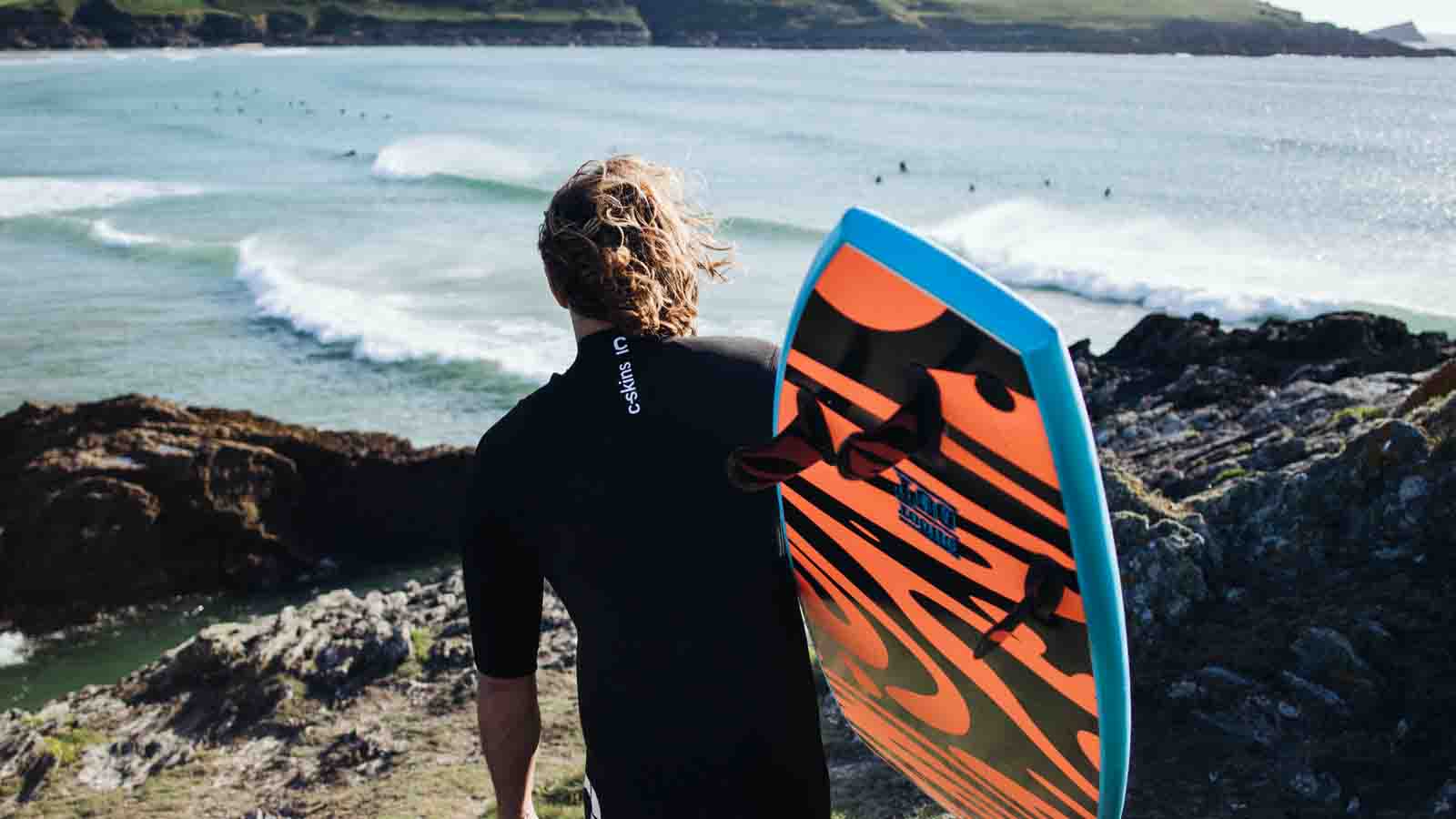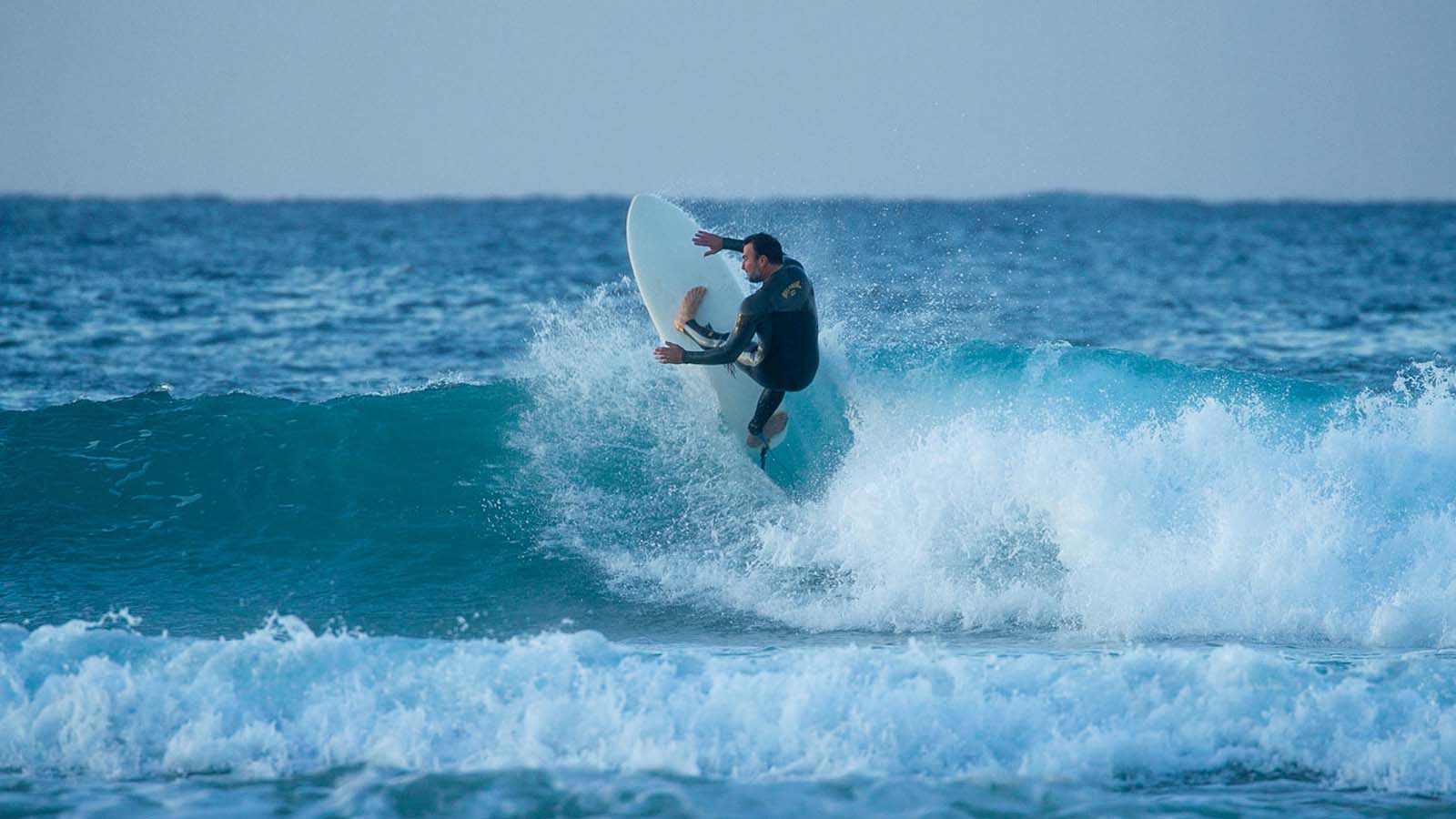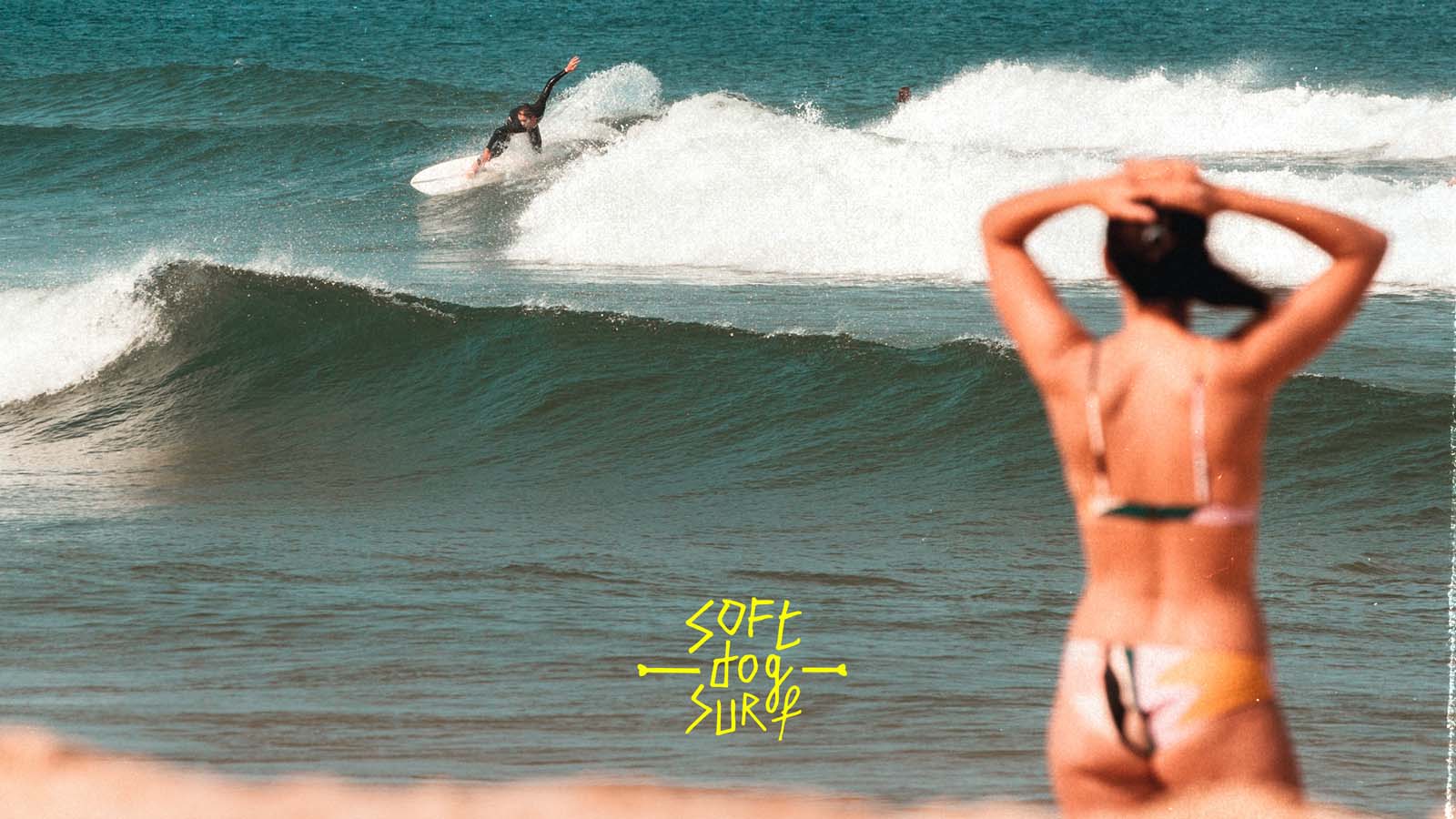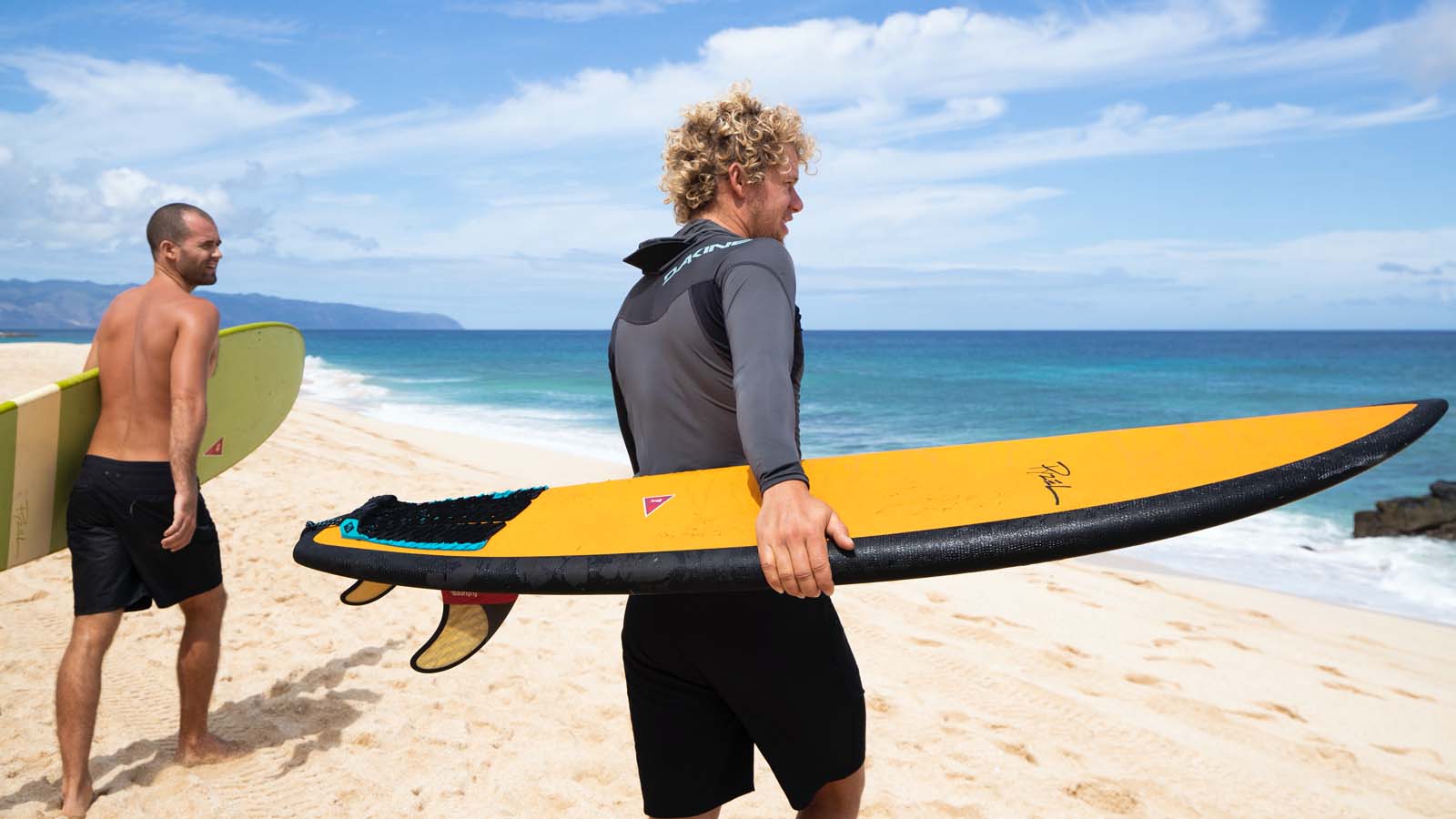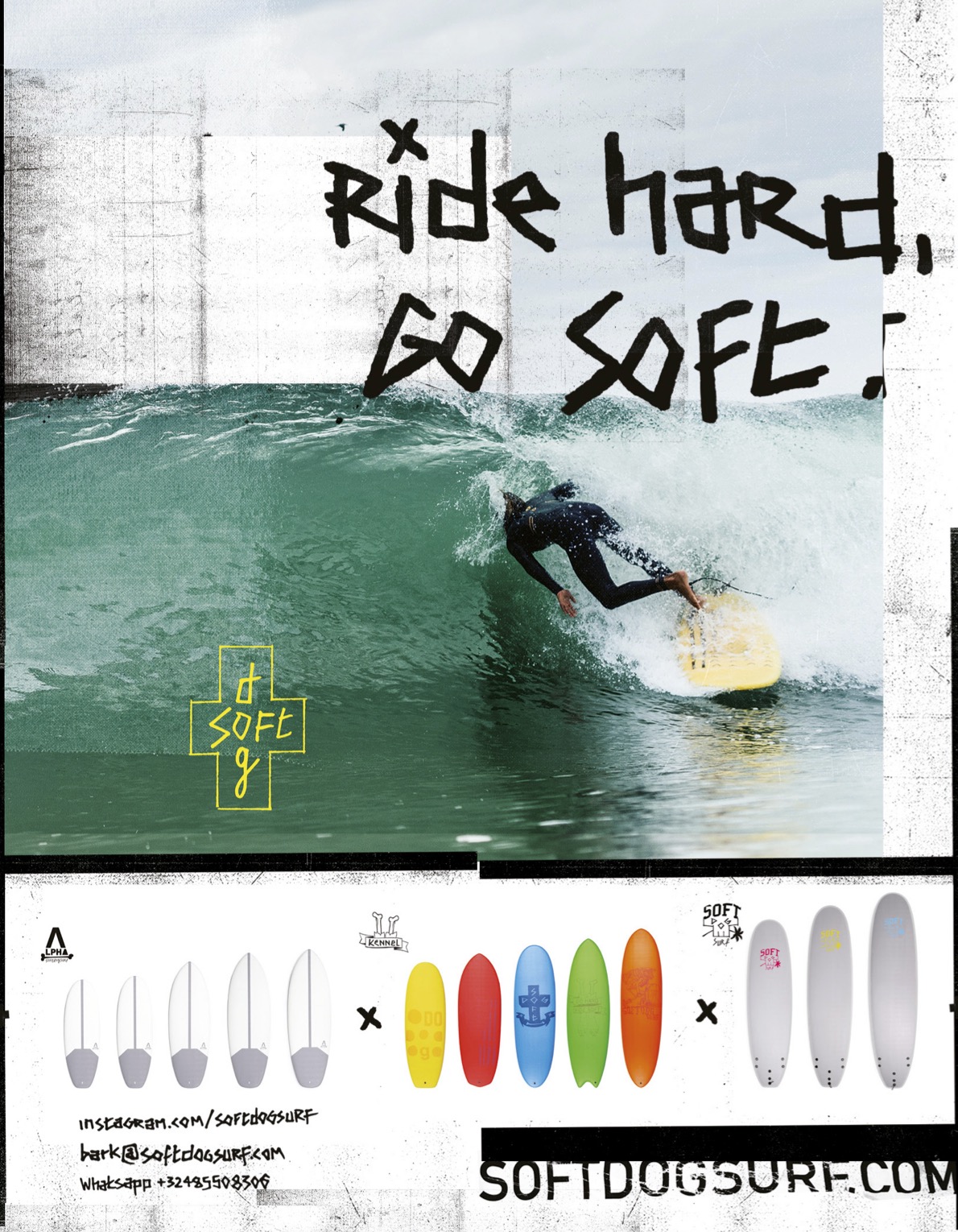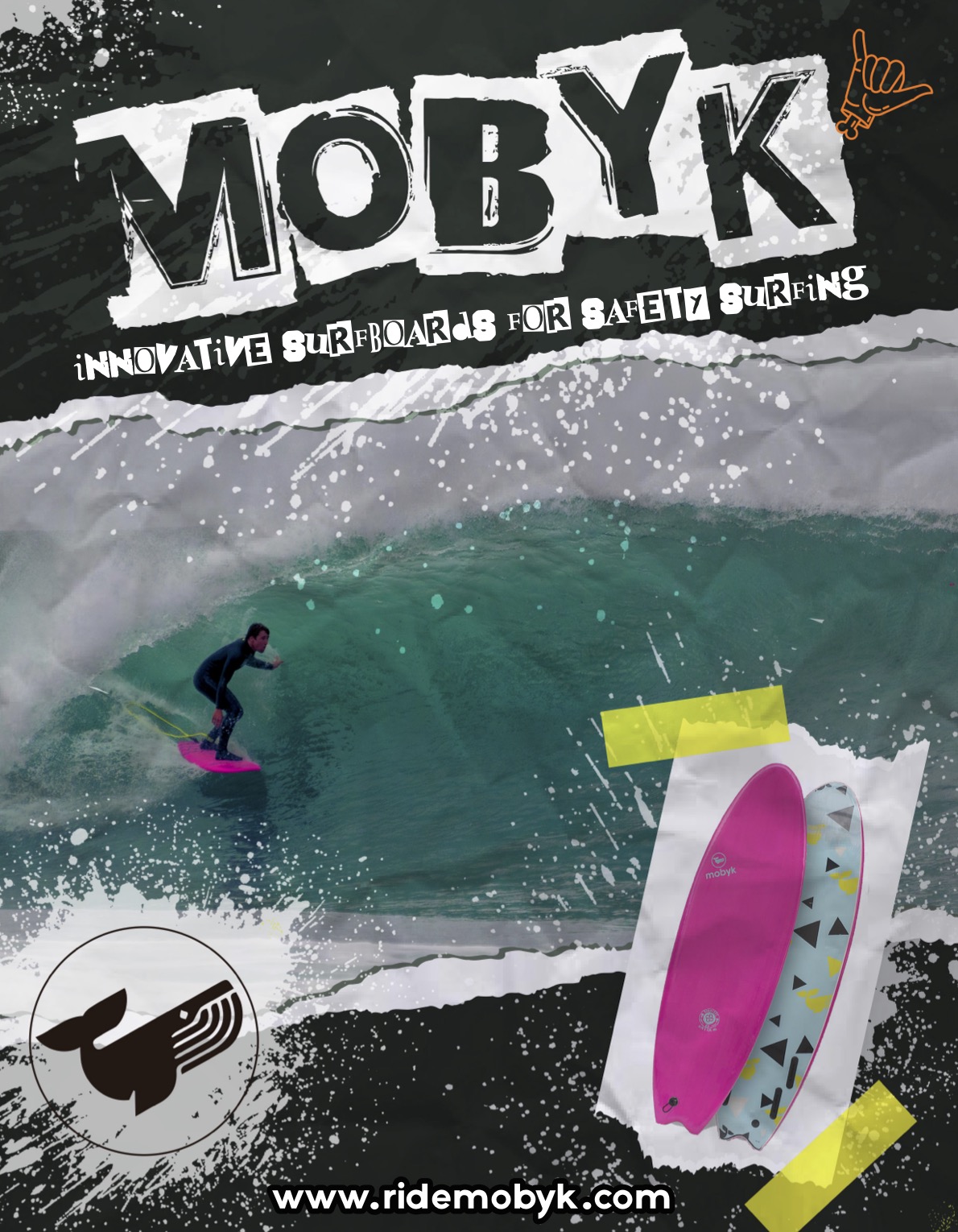Softboards 2021 Retail Buyer’s Guide
In an international context where surfing – like other outdoor activities – has enjoyed a massive influx of new participants, the range of softboards on offer is perceived as a ready-made outlet for newbies to get their first thrills on the waves. However, the figures do not paint such a simple picture: “2021 did see a huge increase in demand for all types of surf products”, relates Santi Zaldua from Mobyk Soft Surfboards (Industry Surf), so much so that “it’s hard to say if the consumer favoured one over the other”, especially since “the trend is to get a softboard for the summer months regardless of the level of surfer.” It’s the same story at MDNS where Marketing and Brand Manager Benoît Brecq tells of growth in both types of construction: “We’re talking about volumes of beginner boards in general having increased”. Brad Rochfort from Softech is daring enough to even reveal his figures to us: +30% sales, soft and hardboards, even though the biggest challenge remains the supply of raw materials that go into softboards.
SOFTBOARDS MARKET 2021: NO NAME VS CORE
Softboards are like big sugary sweets: behind their attractive wrappers and appealing, explosive colours, you never really know what their ingredients are and even less about whether they are good for you or good for the planet. This attribute has worked in favour of emerging “no name” brands, just like in the golden era of bodyboarding and, incidentally, softboards have borrowed elements of their construction. So how do we separate the wheat from the chaff? “We recommend looking for proper fin boxes so you can ride a choice between softer fins like our Mobyk Safety fins or a good set of normal twin tab fins for better performance”, explains Santi Zaldua. He also recommends that you check for good rigidity over their entire length. At GO Softboards, a brand developed by the International Surf Alliance (Torq, ROAM…), General Manager Sebastian Wenzel wants you “to understand what you actually don’t see…the inside of the boards.” At GO, there are two different stratifications aimed at different kinds of use: an integral fibreglass layer for the surfing range and a wooden sandwich deck for surf schools and rentals. It’s a similar idea at MDNS who offer EPS, HD Core and Epoxy Soft constructions. For established classic rigid board brands, risking their reputation with “cheap” products is out of the question: “When you look at all the surf brands, products are tested in proper waves that show that the material used can resist to a normal utilisation”, explains Rémi Chaussemiche, European Marketing at Pyzel and JJF by Pyzel. MF Softboards (Mick Fanning) remind us of the retailers’ role in highlighting the quality of products: “Retailers are in the perfect position to explain that not only will an MF Softboard last longer – but due to the performance elements (such as being able to swap in for rigid FCS/Futures fins), customers will progress faster”, assures Tom Barltop.
SHAPES 2021
Let’s allow Benoît Brecq from MDNS to speak because we couldn’t sum the market up any better: “You have to differentiate between two types of softboard: boards that sell in high volumes and boards that generate hype. In hype-generating boards, replica high-performance softboards and nano shortboards are fun for small summer conditions but the sales volumes are quite low because they are aimed at good surfers and the percentage of them in the water is low. The majority of sales volumes comes from Mini-Mals and Funboards.” However, for a specialised retailer the first category must not be neglected because their core clientele are looking to set themselves apart from the masses, even when it comes to softboards.
Summer boards with soft constructions should undoubtedly be looked on favourably, like the Retro Quad Series and Fish Series from Ryder, “Both these series’ templates are comparable to hardboard models in dimensions and rail thickness to provide a high-performance template”, explains Shane Britten, Product Manager. For example, at Softech one of the best sellers in Europe is none other than the Eric Geiselman pro model, the Flash, a performance hybrid shortboard shape. Ultra short “Nano” boards with bodyboarding outlines have lost some ground as they are too extreme, only to the benefit of “Rounded shortboards and bigger volume shortboards in general”, confirms Matteo Fiorvanti, Business Development Manager at Euroglass (Quiksilver & Roxy Softboards). Fishes are also still very popular amongst the advanced surfer population, in the mould of the Astro Fish from JJF by Pyzel, “a classic retro fish outline with a modern twist to it”. Mick Fanning Softboards are also completing their range with two new fishes, the first called Kuma Fish (“winner of the WSL x MF Global Shaper Challenge”) and a second that follows the trend toward mid-length twins, the Twin Town, not to mention the Sugar Glider, a single-fin mid-length.
BACK TO SCHOOL
For surf shops housing surf schools and/or board rental services, the choice of board ranges is often a bit of a dilemma: rigid or soft? “the small, lower priced operators often go for foamies vs the established schools who often go for our soft top/soft bottomed durable glassed boards”, explains Sander Blauw, International Commercial Director at NSP, which entered into softboards last year. For Softech this is a juicy market that they are tapping into through a dedicated “Original Series” range whose Roller model tops the podium in terms of sales. With its reworked shape (more lift at the nose) and an exclusive flexible carry handle, it comes in six colours per length so that “schools can match colours to their company branding” and they can “purchase specific size/colour combinations so they can identify board sizes just by the colour.”
Another trend is for ultra-wide shapes like the new Zeppelin from NSP or the Whopper versions of the Take-Off range at Vision Softboards – four inches wider than “regular” models. At GO Softboards, the ultra-wide models in the Surf school range have inspired the roll out of “Wides” in the Surf range, oversize shapes that follow the more core look of this series.
CONSTRUCTIONS 2021
On the whole, softboards have gentrified by copying attributes of hardboards, as is the case for the epoxy-core models from Softech which will reach Europe in 2022: a light epoxy construction created in a vacuum with two layers of fabric on top and one underneath, a real birch stringer and FCSII plugs, this range makes a premium softboard. A newcomer to the soft market, JS Industries are also working on the top-of-the-range with stratified EPS core models and a construction that translates to better feel thanks to a higher weight that allows you “to keep momentum when you’re surfing”, explains Hervé Lacastaigneratte, distributor through Surf Lounge.
This hybridisation between hard and softboard is also on the menu at Euroglass who are working on boards destined for wave pools – undoubtably a future niche. You can see similar constructions at GO Softboards, which is reflected in the price admits Sebastian Wenzel: “These are not the cheapest, but when you do not have to buy new boards every year, they will give you a much better return”. We shouldn’t forget about their enhanced durability, often a point of criticism in softboards. This is also why Softdogsurf are using a Lizard Soft Skin covering made of eco-friendly IXPE rather than EVA, for example. The brand’s founder, Joeri Van de Vliet, is even promising upcoming Future Fins’ fin boxes made of recycled plastic although he also admits that the biggest sustainability problems still lie in the transportation of products. Finally, another solution that’s worth a mention comes from Ryder with Shane Britten highlighting Skintec technology, a multilayer polymer skin that absorbs impacts and compressions, laid under the outer skin.
LOOKS 2021
The debauchery of different colourways, prints and other fantasia seems dead and buried. The softboard is entering adulthood and is acquiring legitimacy by going for a look that’s as close as possible to the “real thing”: the hardboard. Completely white is on offer at Go Softboards, Softdogsurf and JS Industries and it’s difficult to tell them apart from hardboards without touching them. At MDNS, the top-end EPS softs are off-white with quite a classy marbled effect on the deck. Just as classy, total black from Pyzel that “gives a real performance look to it and contrasts well with the logo”, explains Rémi Chaussemiche. Hardboard family ties are also important for Ocean & Earth. The graphics on their Mark Richards model are similar to that of traditional boards or longboards with a white deck imitating a knee patch and coloured resin hull. The exception to the rule is Catch Surf, one of the leaders of the softboard craze over the last ten years, whose visual signature remains just as strong through punchy collabs with Santa Cruz Skateboards for example this year “featuring the Keith Meek Slasher and Jim Phillips hand art!”, enthuses Sales VP Joel Manalastas.






